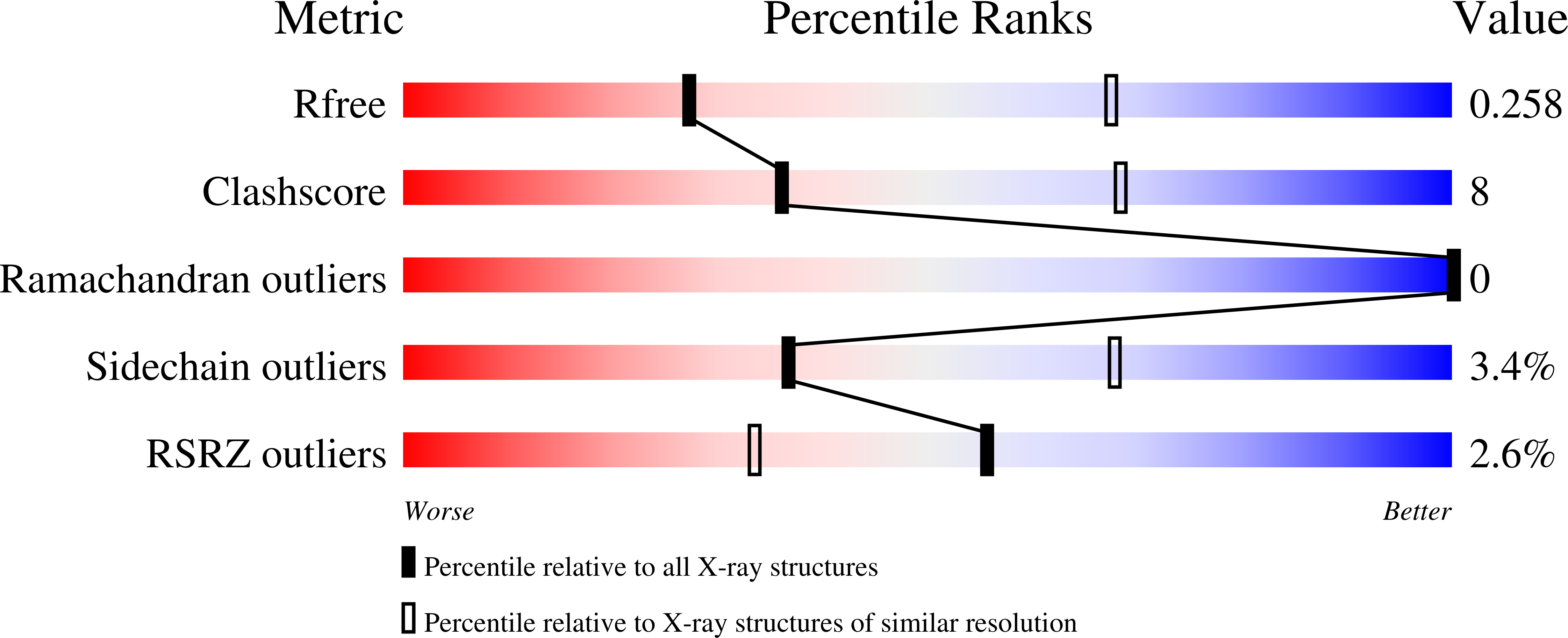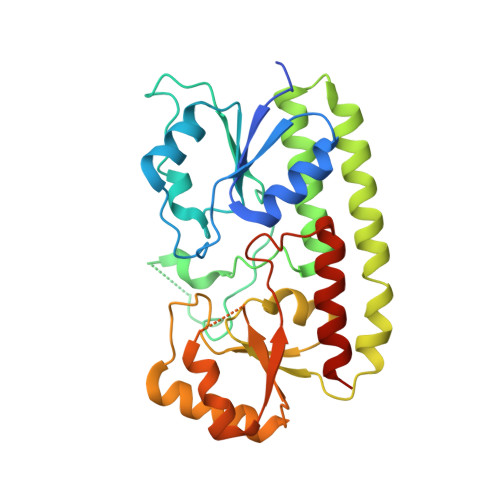Conformation of the Solute-Binding Protein AdcAII Influences Zinc Uptake in Streptococcus pneumoniae .
Zupan, M.L., Luo, Z., Ganio, K., Pederick, V.G., Neville, S.L., Deplazes, E., Kobe, B., McDevitt, C.A.(2021) Front Cell Infect Microbiol 11: 729981-729981
- PubMed: 34490149
- DOI: https://doi.org/10.3389/fcimb.2021.729981
- Primary Citation of Related Structures:
7LM5, 7LM6, 7LM7 - PubMed Abstract:
Streptococcus pneumoniae scavenges essential zinc ions from the host during colonization and infection. This is achieved by the ATP-binding cassette transporter, AdcCB, and two solute-binding proteins (SBPs), AdcA and AdcAII. It has been established that AdcAII serves a greater role during initial infection, but the molecular details of how the protein selectively acquires Zn(II) remain poorly understood. This can be attributed to the refractory nature of metal-free AdcAII to high-resolution structural determination techniques. Here, we overcome this issue by separately mutating the Zn(II)-coordinating residues and performing a combination of structural and biochemical analyses on the variant proteins. Structural analyses of Zn(II)-bound AdcAII variants revealed that specific regions within the protein underwent conformational changes via direct coupling to each of the metal-binding residues. Quantitative in vitro metal-binding assays combined with affinity determination and phenotypic growth assays revealed that each of the four Zn(II)-coordinating residues contributes to metal binding by AdcAII. Intriguingly, the phenotypic growth impact of the mutant adcAII alleles was, in general, independent of affinity, suggesting that the Zn(II)-bound conformation of the SBP is crucial for efficacious metal uptake. Collectively, these data highlight the intimate coupling of ligand affinity with protein conformational change in ligand-receptor proteins and provide a putative mechanism for AdcAII. These findings provide further mechanistic insight into the structural and functional diversity of SBPs that is broadly applicable to other prokaryotes.
Organizational Affiliation:
Department of Microbiology and Immunology, The Peter Doherty Institute for Infection and Immunity, University of Melbourne, Melbourne, VIC, Australia.
















